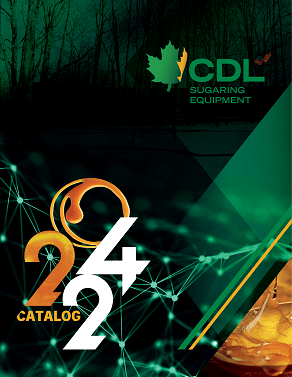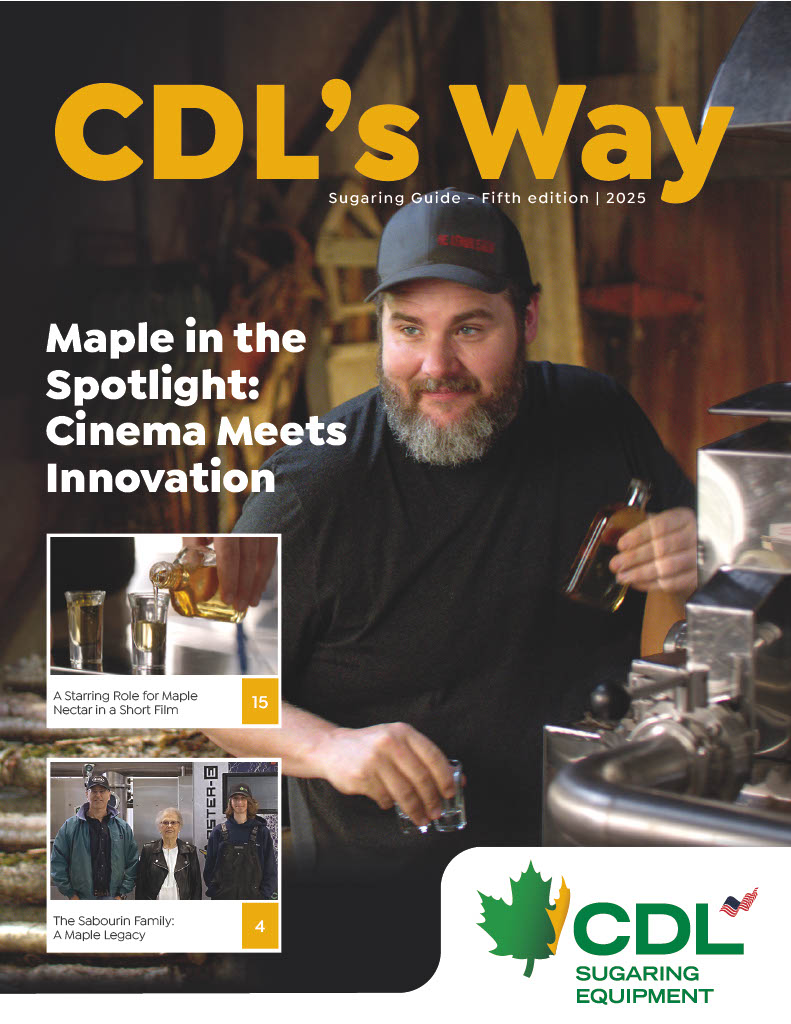Total yields from red maples
Red maples (plaines, Acer rubrum) are abundant throughout the maple-producing region of the U.S. and Canada, particularly in southern and midwestern areas. They’re able to adapt to diverse growing conditions and climates and can be found everywhere from moist soils and swamps to dry ridges and uplands. Their ability to adapt to and thrive in diverse sites and growing conditions also means that, unlike sugar maple, they’re prevalence in forests of the maple-producing region is predicted to increase under future climate change scenarios. Because of this, it’s likely to be an increasingly important species for maple production. In addition, maintaining red maples in sugarbushes is one way to help achieve higher levels of biodiversity, a critical factor to support the resilience of these forests to current and future stress.
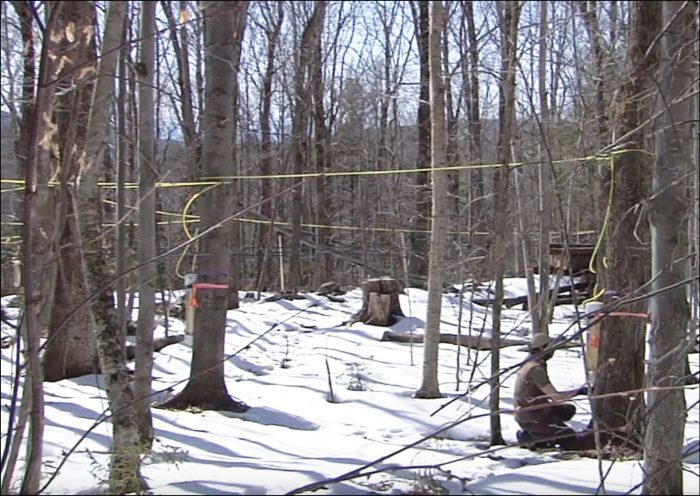
Many producers include red maples as crop trees without a second thought. And still many others will walk past red maples with a roll of tubing. Why the difference? Much of it arises from some lingering perceptions about red maples – that they produce lower yields or stop running earlier than sugar maples, or produce syrup with inferior flavor or that exhibits buddy flavor earlier than sugar maple. But are any of these actually true? Most of these beliefs stem from anecdotal observations made with gravity sap collection using buckets, and before the use of RO was common. However, there are actually no scientific data to support these perceptions, particularly with modern collection and processing practices (vacuum, RO, etc.). So because of the many current benefits of including red maple as crop trees and their importance for maple production in the future, we’ve been conducting research to provide some to fill in some of these gaps in our knowledge. The first step was to investigate the total yields of red maples – with current collection practices including good vacuum and sanitation, what are the total syrup yields produced by red maple trees across a season, and how does this compare to sugar maples in the same stand? Most of us have probably had some firsthand experience with red maples and their tendency to produce copious amounts of sap, with a lower sugar concentration than sugar maples. But what does this add up to across the whole season?
To answer this, 8-10 healthy red and sugar maple trees in each of 4 diameter classes (9-10.9, 11-12.9, 13-14.9, 15-16.9”) in the same stand at the Proctor Maple Research Center (PMRC) were each outfitted with an individual sap collection chamber. Vacuum was applied to the system using a rotary claw vacuum pump equipped with a variable frequency drive maintained between 25-27”Hg throughout the season. Trees were tapped on the same date (2” tapping depth, 5/16” diameter), and sap volume and sugar concentration of each was measured after each flow period until the conclusion of the season. This was determined by when either sap flow ceased, or late-season off-flavor was detected within the PMRC maple operation, whichever arrived first. The experiment was repeated in 2020 and 2021, with new droplines and check-valve spouts each year.
The total syrup yields for red and sugar maples in the 2020 and 2021 seasons are shown in Figure 1. Not surprisingly, the yields for both species were much lower in 2021, which was a low production year for much of the maple region. The yields of red and sugar maples were not significantly different in either year of the study. In addition, sapflow stopped at the same time for both species in both years.
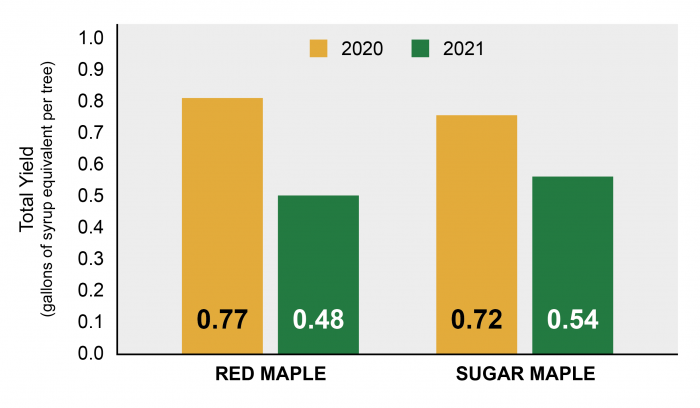
Fig. 1 – Average total syrup yield of red (n=38) and sugar maple (n=35) trees from 9.0 to 16.9 inches in diameter during the 2020 and 2021 production seasons at the University of Vermont Proctor Maple Research Center. Error bars represent standard error of the means. Average yields of red and sugar maples were not significantly different in either 2020 or 2021 (Student’s t tests, p < 0.4796 (2020), p < 0.1735 (2021).
These results indicate that with good vacuum and sanitation, the fundamental yields achievable from red maples are similar to sugar maples. So all things equal, a healthy red maple has the potential to yield the same total quantity of syrup each season as a healthy sugar maple of the same size in the same location. However, it should be kept in mind that there are potential factors that could affect this – for example, some red maples have a large central column of discolored (nonconductive) wood, which could potentially reduce yields due to less available conductive sapwood in general, or when tapholes are drilled into it. You can find a more detailed discussion of this and other factors that might impact red maple yields, as well as more results from the study, in this presentation on the UVM PMRC YouTube Channel https://youtu.be/ncnlc3tLBt8.
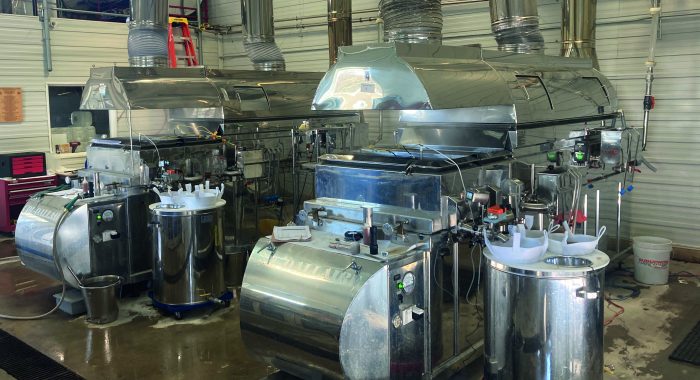
Fig. 2 – Maple Processing Research Facility at the University of Vermont Proctor Maple Research Center during an experiment processing pure red and sugar maple sap concentrated to 8%.
So even though red maples had similar total yields to sugar maples in this study, there’s still a missing piece of information to complete the picture – flavor. If red maple sap produced buddy syrup earlier, or syrup with some other undesirable flavor attribute, the total yield would no longer be equivalent. We’re producing and selling a product based on flavor, not just pounds of sugar. So we’ve been investigating this question during the 2022 season, producing syrup simultaneously from pure red and sugar maple sap in identical processing conditions (Figure 2), and will be completing the subsequent sensory experiments with the syrup produced over the next few months to answer some of the questions about the flavor of syrup produced from red maple sap – is it different from syrup produced from sugar maple sap? If it is different, is it less (or more) desirable or preferred? Does it produce buddy syrup earlier? We’re looking forward to discovering and sharing what we find.
Acknowledgements: Funding for this work was made possible USDA AMS ACER Access Project AM190100XXXXG069.

